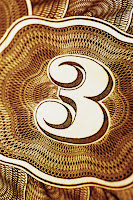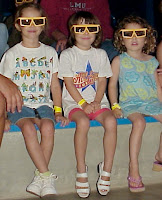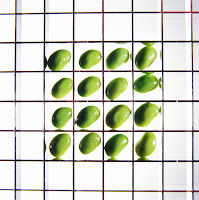Although today's date is 3-13-13, Odd Day won't happen until September, when the date becomes 9-11-13. Odd day is a day that singles out those wonderful, wacky odd numbers. It occurs when three consecutive odd numbers make up a date– something that happens only six times a century. But this March date of 3-13-13 is so unique, perhaps we could call it 3-13 Day, Prime Number Day (if you use '13 instead of 2013), Triple Three Day or some other more clever title.

Let's look at some odd ways to celebrate math on this special date with three 3s.

You can choose to let your students work in triplets instead of pairs, have them complete the odd problems on their Basic Fact Practice problems. Ask them to multiply, divide, add or subtract as many different odd numbers as they can. (You specify one- or two-digit numbers or higher.)
Prepare some snack crackers with odd numbers of sides and serve them with three kinds of cheese or toppings. (Be careful not to serve items that may aggravate your students' allergies.) Have a three-legged race, sing "My Hat, It Has Three Corners (see the lyrics below)" or "The Three Little Kittens," divide the class into three teams for a game of Math Jeopardy or Charades. Change the number 13 to be a lucky number for the day. Count off and let your 13th student lead the game or help serve the snacks. Award anyone who completes 13 correct problems with a special sticker or 100 bonus points. Hand out 3-D glasses and have your students try to solve some math problems while wearing them. Provide newspaper and have each student make a tricorn hat to wear during the day. Since tomorrow is Pi Day, start celebrating a day early by incorporating Pi Day Ideas into your lessons. Did you know that in some fonts, 3.14 flipped horizontally looks like PIE?

Read our previous post for Pi Day suggestions. Let your students help you think of some creative odd ways to celebrate the day, and enjoy!
In
Excel Math, elementary students begin to learn about even and odd numbers. We help build confident, successful math students, many of whom develop a love for mathematics and get excited to see how math is used in everyday life.
Learn how Excel Math can help prepare your students for the new assessments coming soon to a school near you. Visit our website at
www.excelmath.com to take a tour of the Excel Math program. Then ask for our sample packet and see for yourself why Excel Math continues to get rave reviews from the educators who use it.
Local school principals and teachers are quick to point out the positive impact Excel Math has had on student test scores across the country. Read more on our previous blog post:
Principals Praise Excel Math for Exceptional Math Scores.
New to
Excel Math? Find the Excel Math correlations to your state standards
on our website.
Here are the lyrics to "My Hat, It Has Three Corners." After singing it through, begin dropping off one word each time you sing it through and replace the words with motions (but no longer sing them) until you are only singing "it," "has," "and," "had," "would" and "be." The results will have your class smiling:
 My hat, it has three corners,
My hat, it has three corners,
Three corners has my hat.
And had it not three corners,
It would not be my hat.
If you have a tri-corner hat available, show it to your students and give a bit of its history. Explain that "tri" is a prefix meaning "three." Here are the motions to do in place of singing the words:
my = point to self
hat = point to head
three = hold up 3 fingers
corners = point to elbow
not = shake head no
























